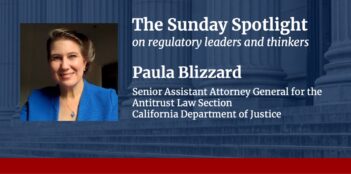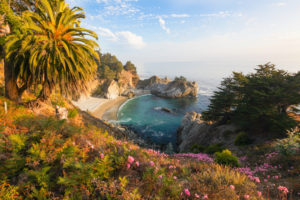
A legislative committee report urges state regulators to seek alternative water sources.
As summer winds down, forecasters have already spent much of 2016 speculating about the impact of the El Niño weather pattern on California’s water supply later this year. Although the state received an increase in precipitation this past winter, water remains a concern. Despite improvements, some suggest more legislation is necessary.
In response to the water supply challenges, last year the State Assembly formed the special Select Committee on Water Consumption and Alternative Sources to analyze possible legislative and regulatory responses to securing alternative water sources like greywater systems and desalination.
Greywater systems refer to the extra water generated from household appliances, such as sinks, showers, washing machines, that can be reused in irrigation. Desalination strips the minerals from seawater to make it potable.
After gathering evidence and holding several hearings featuring testimony from regulators, scientists, academics, and members of the general public, the Committee, in its final report, concluded that the state must undertake proactive measures – beyond conservation – to adjust to hotter climates and limited water sources.
The Committee’s report identified alternative water sources including capturing stormwater and reuse of recycled water—mostly from agricultural sources—to make it potable. The Committee also urged the state to commit greater attention to the role of technological innovation in solving the water crisis.
In addition to offering alternative solutions, the report summarized testimony from the several hearings it conducted.
The first hearing provided a background on water use and the potential for alternative sources. Professor Eilon Adar, of Israel’s Ben-Gurion University, offered an international perspective, noting that, unlike Israel, California “uses water in irresponsible ways” and should invest in treating wastewater.
A panel of California-based academics and researchers then explained the state’s water infrastructure, noting a particular concern for agricultural and rural communities. Natural Resources Agency Secretary John Laird testified that the Water Action Plan, an outline of the state’s five-year roadmap for water management, takes a regional approach.
The Water Action Plan was first published in 2014— before the state lifted a 25% water conservation mandate—and grants more autonomy to each of California’s more than 400 municipal water agencies. To ensure each region acts efficiently, implementing the plan will require increased cooperation and communication between regions, according to Laird.
Barton Thompson, of Stanford University’s Woods Institute, referred to water conservation as “low-hanging fruit,” and emphasized the environmental and ecological benefits of using stormwater, greywater systems, and recycled water.
Systems like stormwater, greywater, and recycled water find additional use for water that would otherwise be discarded. Experts noted, however, that high costs may limit the adoption of such innovative water practices.
The second hearing focused on desalination, which is the process of converting saline-rich water from the ocean into clean, usable water. Heather Cooley, a director at the Pacific Institute, testified that the practice of desalinating presents energy and financial concerns. Since it is an energy-intense process, it emits significant greenhouse gases. In addition, she explained, its costs can be prohibitive, and it can have deleterious effects on sea life.
In a public comment following the formal hearing, Linda Escalante of the Natural Resources Defense Council argued that desalination should be used only after “other less energy intensive and expensive options have been exhausted.” Other commenters echoed this sentiment, urging an emphasis on conservation, stormwater capture, and recycled water.
Despite potential pitfalls, some desalination projects are already underway in California. Scott Maloni, a vice president of Poseidon Water, a company that operates national desalination facilities, testified about an existing plant near San Diego. He explained that the process uses reverse osmosis, resulting in some energy recovery. In addition, he projected that the costs of desalinating water run about the same as recycling wastewater.
State regulators reviewed the current process for obtaining permits for seawater desalination projects. Chief Deputy Director Jonathan Bishop, of the State Water Resources Control Board, described the need for consistent regulation, indicating that there was not a streamlined process for approving projects.
Finally, in its third hearing, the Committee addressed issues relating to recycled water. Dr. Newsha Ajami of Stanford University emphasized the importance of water reuse, but noted practical difficulties. She explained that alternative sources like storm water and greywater systems could generate reusable water, but noted the high costs.
Dr. Ajami suggested that multiple parties—including developers and regulators—could share the costs of implementing water conservation measures. Representatives from local water districts discussed their experiences relying on alternative water sources, underscoring a municipally focused approach.
Drawing from the testimony it received, the Committee made policy recommendations in its final report. It agreed with several experts that desalination should be an “option of last resort” due to its significant energy expenditures.
The Committee also noted that the public should be educated on water reuse, since a lack of information can create resistance to the concept, and may lead to the perception that reused water is unsafe. Acknowledging that water technology represents an opportunity for innovation, the Committee urged the state to commit resources towards research.



